When you think of a German Shepherd, the image that likely comes to mind is a large, robust, and intelligent dog known for its versatility in various roles, from service to companionship. But have you ever heard of the Miniature German Shepherd?
This pint-sized version of the classic German Shepherd has been gaining popularity, and for good reason.
The Miniature German Shepherd is a smaller version of the standard German Shepherd. They are not a distinct breed but are typically a mix between a standard GSD and a smaller breed, often a Collie or a Poodle. This breeding aims to create a dog with the temperament and intelligence of a GSD but in a more compact size.
In this post, we’ll dive into the world of Miniature German Shepherds, exploring their origins, characteristics, care needs, and why they might just be the perfect pet for you.
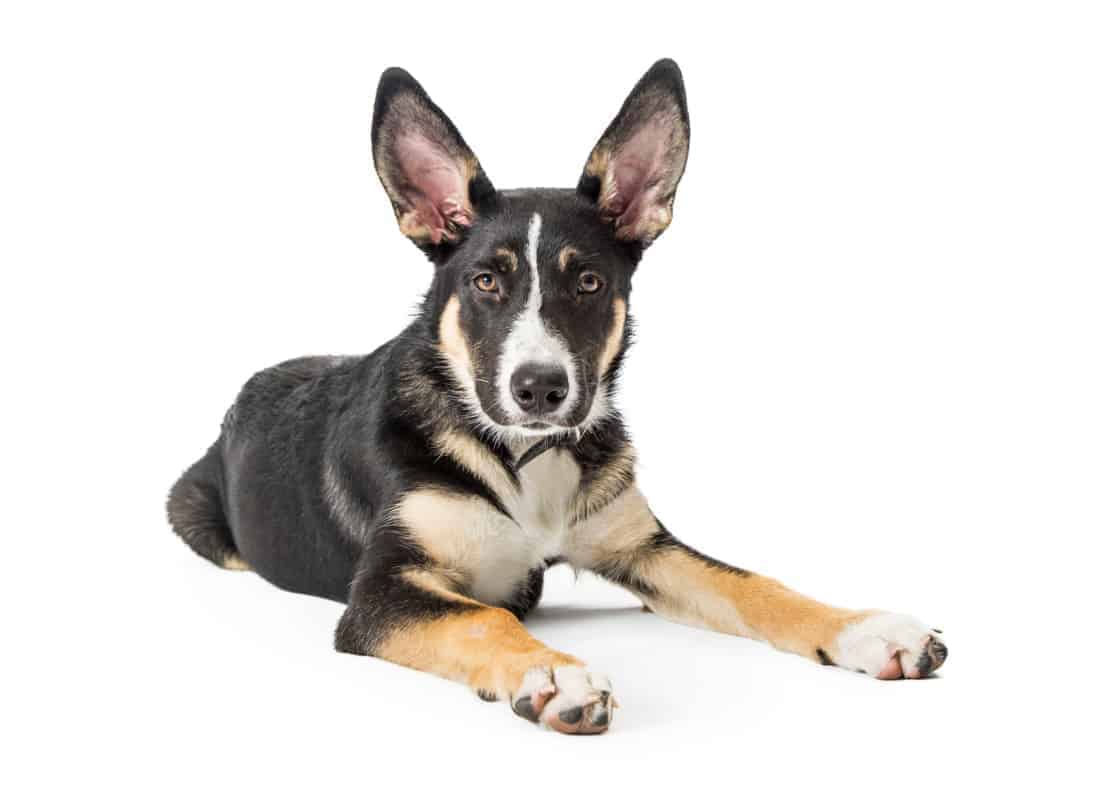
Unveiling The Miniature German Shepherd
The miniature German Shepherd (also called the teacup German Shepherd) has become more popular for people looking for a smaller version of the German Shepherd.
A miniature German Shepherd will look like a smaller German Shepherd, but it is a mixed breed. A female German Shepherd is crossed with another smaller breed, such as a Border Collie, Poodle, Husky, Corgi, Yorkshire Terrier, or even Daschund.
When crossing dogs, you must understand that you can get any combination of the characteristics and appearance of both breeds.
Nonetheless, here are some reasons why you may find a miniature German Shepherd appealing:
- You would like a smaller dog having the appearance and intelligence of a German Shepherd.
- You require a dog that combines the best traits of two or more breeds.
- Avoid undesirable recessive traits that lead to genetic disorders in many purebred dogs.
- You live in a small house or apartment, so a smaller dog would be more suitable.
- You need a more manageable and less powerful dog due to its smaller size.
Learn More About The Miniature German Shepherd In Our Video…
Common Misconception
A common misconception is that mini German Shepherds are purebred.
However, the only purebred miniature German Shepherd suffers from pituitary dwarfism due to a rare inherited genetic disorder.
As a result, these dwarf dogs have numerous serious health issues and a short life expectancy. You can learn more about this condition in my article, Can German Shepherds Have Dwarfism?
Are They Good Family Dogs?
German Shepherds are the preferred dogs for the police and military and are also used as assistance dogs or simply as loyal family pets. They are good-looking, powerful dogs, but are miniature German Shepherds good family dogs, too?
Miniature German Shepherds are good family dogs. They are intelligent, protective, loyal, affectionate, and good with kids and other pets.
The best traits of the GSD are combined with desirable traits of the smaller breed they are mixed with to produce an overall good family pet.
The best way to determine the temperament of any crossbreed is to research both breeds in the cross. So let’s, firstly, look at the German Shepherd…
German Shepherd Breed Overview
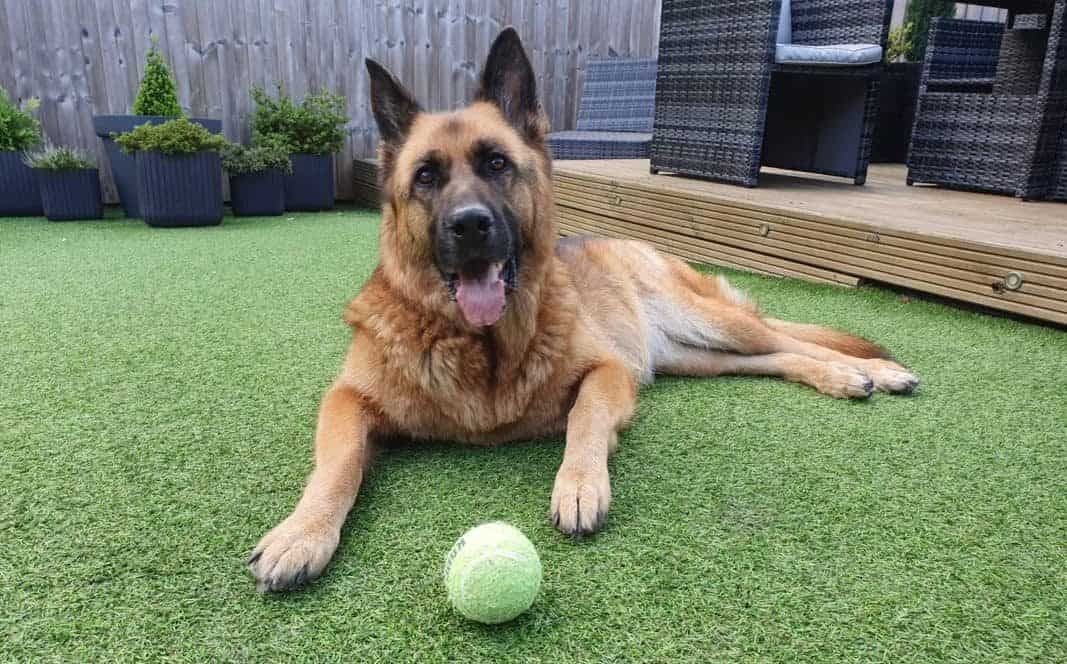
- German Shepherds were initially bred in Germany in the late 1900s to herd sheep. The dog was officially known as the Alsatian in the UK following World War I until 1977, when its name reverted to German Shepherd. They are one of the most popular breeds.
- They are a medium-large breed. GSDs are typically between 22-26 inches (55-66 cm) tall and have a lifespan of between 9 and 13. They are high-energy dogs that require lots of exercise and mental stimulation. My GSD will typically require two hours of daily exercise.
- German Shepherds are good with children and other pets. They will show faithfulness to those they live with. They will get along with other family pets, but they need early socializing and training.
- They are wary of strangers due to their protective nature. However, once they realize you, their owner, is okay with the stranger, they will be too!
- The herding instinct in German Shepherds is strong. They have even been known to herd their owners, especially children! So, my GSD will occasionally gently nip at my heels when I walk away from her during playtime. This is her natural way of telling me that she wants to carry on playing!
- The GSD is double-coated and comes in three variants – short, medium, and long. The medium-haired dog (or plush coat) is the most common. The long-hair gene is recessive, thus making the long-haired variety rarer. They are heavy-shedders and not hypoallergenic.
- They come in a range of colors. However, the American Kennel Club breed standard for the German Shepherd prefers strong, rich colors. Therefore, a white German Shepherd is disqualified from showing.
Trainability
When contemplating this crossbreed, you might want to consider how smart they are and their trainability factor.
Mini German Shepherds are easy to train due to their high intelligence. They respond extremely well to positive reinforcement training, more so if they have been properly socialized.
They are also extremely alert and agile dogs who love to please their owner.
These dogs usually assume the German Shepherd’s outstanding trainability. The GSD is ranked the third breed for intelligence behind the Border Collie and the Poodle.
So, if it is crossed with either of these two, you will have a super-intelligent pup on your hands.
Rewards-based training is the way to go with mini German Shepherds, along with repetition and consistency. Use small training treats as these work well, and keep sessions short and fun.
Miniature German Shepherd vs. German Shepherd
It can be challenging to know exactly what a mini German Shepherd puppy will look like or its precise temperament when cross-breeding.
I’ve already mentioned that the mini GSD will often take the dominant traits of the purebred, but this isn’t guaranteed. Nonetheless, below is a comparison table to easily see the differences between the two and what to expect.
| Mini German Shepherd | German Shepherd | |
|---|---|---|
| Group | Mixed Breed | Herding |
| Temperament | Outgoing, Brave, Protective, Watch-dog, Confident, Intelligent, Alert, Loyal, Independent, Versatile, Affectionate, Less Aggressive | Outgoing, Brave, Protective, Watch-dog, Strong, Confident, Intelligent, Alert, Independent, Loyal, Aloof, Affectionate, Versatile, Aggressive if not Socialized |
| Size | Small to Medium | Medium to Large |
| Weight | Up to 50 lbs. Females will be Lighter | 66 – 88 pounds (Males) 49 – 71 pounds (Females) |
| Height | Up to 20 inches for Males. Females will be Smaller | 24 – 26 inches (Males) 22 – 24 inches Females) |
| Exercise | Medium to High Energy | High Energy |
| Coat Type | Double-coated, Short to Medium, or Medium | Double-coated, Short to Medium, Medium, or Long |
| Coat Color | Black and Tan, Bicolor, Black, Black and Red, White or Cream, Sable | Up to 15 Years (depending on the mix) |
| Shedding | Heavy, Year-round, and Seasonal. Can be less if a Poodle mix. | Heavy, Year-round, and Seasonal |
| Hypo- allergenic | No | No |
| Easy to Train | Yes | Yes |
| Good Family Dog | Yes | Yes |
| Good With Children | Yes | Yes |
| Good First Dog | Yes | Yes |
| Good with Other Dogs | Yes | Yes |
| Suitable for Apartments | Yes | Larger Spaces Preferred |
| Health Issues | Hip Dysplasia, Bloat (GDV), Degenerative Myelopathy | Hip Dysplasia, Bloat (GDV), Degenerative Myelopathy |
| Lifespan | Up to 15 Years (depending on mix) | 9-13 Years |
| Cost | Average of $1500. $100-300 to Adopt | Average of $2000. $100-300 to Adopt |
Do you want more info on whether a purebred or a mix is better? Check out this article, Purebred German Shepherd vs. Mix.
Miniature German Shepherd Size
The whole point of having a mini German Shepherd is that you want a smaller dog with the looks and temperament of a purebred. So one of your first questions might be, how big do miniature German Shepherds get?
Miniature German Shepherds will be much smaller than purebreds. They can even be half the size of a fully grown GSD depending on the other breed that the female has mated with, for instance, a Corgi or Yorkshire Terrier. On average, they will weigh up to 50 lbs and be up to 20 inches tall.
Even if a GSD is mated with a medium-sized dog such as a Husky or Border Collie, they will usually be smaller than the average height of a female German Shepherd (22-24 inches) and weigh less than a female’s average weight (50-70 lbs).
Appearance
If you are contemplating getting a miniature German Shepherd, you may wonder how you know what you will get regarding appearance.
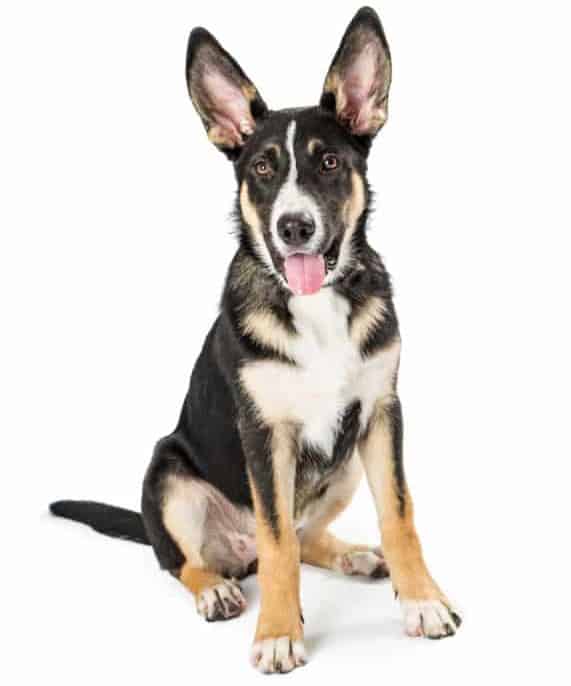
A miniature German Shepherd will usually look very similar to a German Shepherd, having similar colors and markings and comparable physical characteristics such as pointy ears or a bushy tail. They will typically take the appearance of a compact purebred; however, this is not guaranteed.
For example, look at the German Shepherd/Border Collie Cross (Shollie) in this picture. You can see the dog keeps the main colors, markings, and pointy ears of the German Shepherd.
Occasionally, a miniature German Shepherd will resemble a split combination of the German Shepherd and the other breed used in the cross. Sometimes, it can be difficult to predict how they will look as they may or may not share the appearance of both parents.
The only way to see the true appearance of the dog is if you choose to adopt one from a shelter or a re-homing center.
Or you can head to this article, 21 Best German Shepherd Mixes (With Pictures), to see some great dogs.
Care Requirements
If you assume that the care plan of a miniature German Shepherd is quite similar to that of other breeds, you’re probably wrong. Unlike German Shepherds, they require fine-tuning of the care plan to suit their needs.
Food
Miniature German Shepherds need to be fed the quantity of a medium-sized dog, and slow feeding is highly recommended to avoid choking.
Don’t feed the quantity of food meant for a German Shepherd to miniatures. They may feel bloated. Likewise, train your mini German Shepherd to eat slowly.
Exercise
Being a cross-breed dog, this miniature German Shepherd needs a combination of exercises that promote movement, fun, and interaction. However, you shouldn’t overload them with high-intensity exercises and long runs.
Although they’ve great stamina, they can’t cope with a purebred German Shepherd. Schedule the routine carefully.
Shedding and Grooming
German Shepherds are naturally heavy shedders. But what about the miniature variety? Do they also shed?
Miniature German Shepherds do shed. They are heavy shedders and will shed the same as German Shepherds.
This is due to their double coat that sheds all year round and gets noticeably worse twice a year when they will “blow their coat.” This is known as seasonal shedding.
When a dog “blows his coat,” clumps of the dense undercoat will fall out due to temperature and season change.
This occurs in the spring and fall. In spring, the undercoat will change to a lighter, cooler one in line with warmer weather, and in fall, a thicker, warmer undercoat will grow in preparation for the winter.
If you hope for a compact German Shepherd that sheds less, you will be disappointed! However, sometimes, the degree of shedding can depend on the breed used in the cross.
For example, Poodles are a low-shedding breed, and so a German Shepherd/Poodle Cross (Shepadoodle) may not shed at much if the Poodle’s genes are dominant.
Are They a Good Choice for Allergy Sufferers?
If you suffer from an allergy to pet dander, you may wonder if the mini German Shepherd is hypoallergenic.
Miniature German Shepherds are not hypoallergenic. Even if a hypoallergenic breed such as a Poodle is used in the cross, it is improbable that the puppies will also be hypoallergenic, but they may shed less than a purebred German Shepherd.
Lifespan
Mini German Shepherds often live longer than GSDs and can live up to 15 years, depending on the breed used in the mix – compared to 9-13 years for a GSD.
Small dogs live longer than large breeds because large breeds age faster. Mixed breeds are also more likely to have a recessive disease.
There are many misconceptions and inaccuracies about whether mixed breeds are healthier than purebreds, so let’s investigate.
This recent study of 100,000 dogs found that purebreds were 2.8 times more likely than mixed breeds to have a recessive disease, although mixed breeds can still be carriers.
Another study of over 27,000 dogs conducted over 15 years to determine the proportion of mixed-breed and purebred dogs with common genetic disorders found that the theory that purebred dogs are more susceptible to inherited disease is only true for some disorders.
The German Shepherd is generally a healthy dog but is susceptible to certain genetic health issues like most purebreds. They are prone to hip dysplasia, degenerative myelopathy, and bloat (GDV).
Hip dysplasia occurs when there’s a displacement between the hip joint and the thighbone, which can cause lameness and pain.
The Orthopedic Foundation for Animals states that 20.5% of GSDs will suffer from this genetic condition, so not all German Shepherds will have bad hips. However, it can be prevented by proper screening and stamping out unscrupulous breeders.
Health
As miniature German Shepherds aren’t purebred, they’re likely to suffer from health complications that originate from families of both parents.
Some common health problems include dysplasia, hemophilia, degenerative myelopathy, and epilepsy.
Hip & elbow dysplasia are common in large breeds like German Shepherds. Although mini German Shepherds are smaller, they can still suffer from hip and elbow dysplasia due to genetic reasons.
Another common health condition as a result of genetics is hemophilia. Blood cannot clot properly. While it isn’t a life-threatening one, it’s essential to realign the routine if your mini German Shepherd shows signs of hemophilia.
Similar to dysplasia, degenerative myelopathy can happen due to genetic reasons, and your mini German Shepherd can experience weakness in the rear limbs as age progresses.
Based on the other parent (Corgi, Collie, Poodle, Pug, or Daschund), the other health issues can be determined. However, these small breeds are prone to epilepsy, and you should take prior care.
Popular Miniature German Shepherds
Below are the names of the most popular miniature German Shepherds.
- Shepadoodle (German Shepherd/Poodle cross)
- Shollie (German Shepherd/Border Collie cross)
- Siberian Shepherd (German Shepherd/Siberian Husky cross)
- Corman Shepherd (German Shepherd/Corgi cross)
- German Yorkie Shepherd (German Shepherd/Yorkshire Terrier cross)
- Shug (German Shepherd/Pug cross)
- Dachsund Shepherd (German Shepherd/Dachsund cross)
The easiest approach to determining a mixed breed’s temperament is considering the breeds involved.
We looked at the German Shepherd earlier in the article, so let’s now investigate some other breeds used in the cross…
Poodle
Many of the Poodle’s characteristics are quite similar to the GSD, which will give you a strong indication of the future character of your SHEPADOODLE. However, sometimes it can be a bit of a lottery with appearance, as you can see in the image of this Shepadoodle.
Key Points:
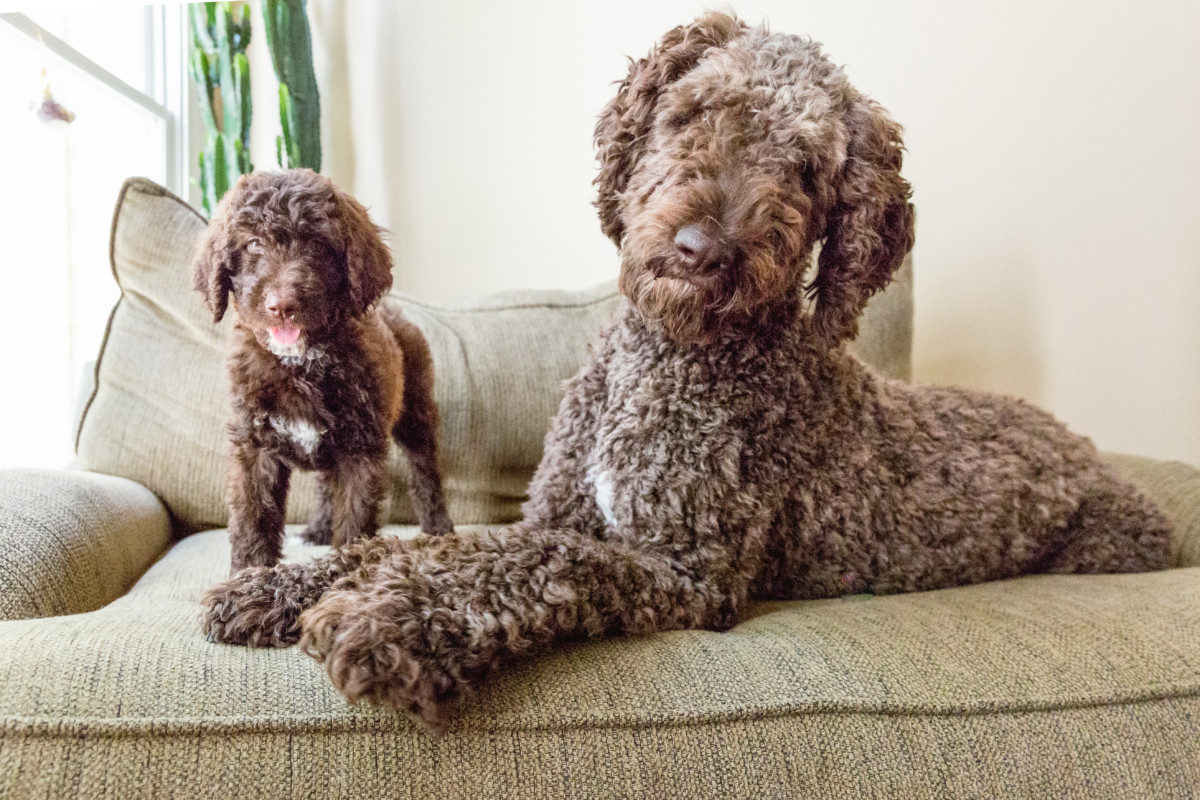
- Intelligent, friendly, graceful, proud, affectionate, loyal, alert, active, protective, fun-loving, and highly trainable.
- Small dogs typically in the 13-15 inches (33-38 cms) range. (Miniature Poodles are used).
- Lifespan is 12-15 years.
- Various colors.
- Good with strangers once socialized.
- Good with children and other animals.
- They adapt well to apartment living and are ideal for novice owners.
- High grooming needs due to their unique curly, wiry, and dense hair. Low shedders and hypoallergenic.
- Excels in many activities, including agility, obedience, herding, and tracking. Often used as assistance dogs.
Border Collie
When the Collie is crossed with the German Shepherd, there is no doubt you will end up with one very smart and super trainable SHOLLIE.
Key Points:
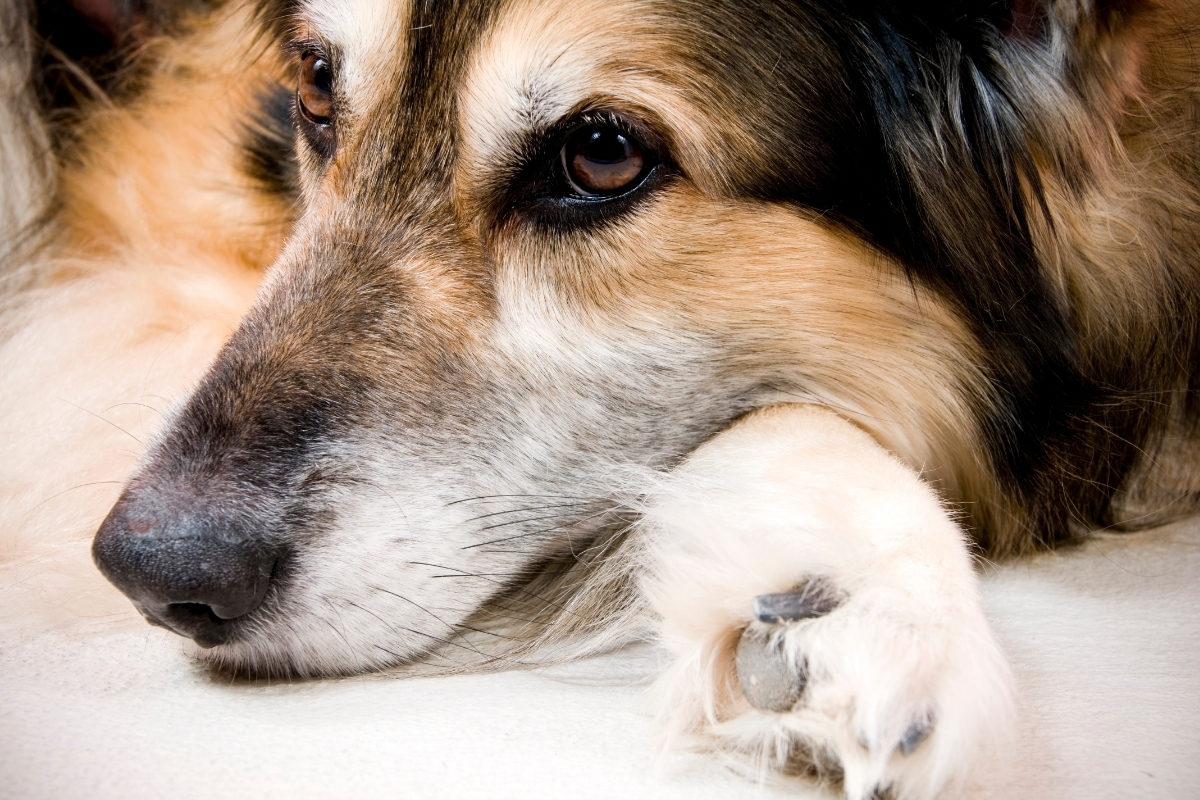
- Herding dog famous for his intense stare used to control the flock.
- No. 1 breed for intelligence, highly trainable, protective, good watchdogs. Love to please their owners and respond well to praise. Always alert and ready to obey commands.
- Medium size dog with an overall height of 18-22 inches (46-56 cm). Lifespan is 10-15 years.
- High energy becomes destructive if not exercised.
- Good around children but need early socialization and obedience training due to strong herding instinct.
- Excel in various canine sports, including tracking, obedience, agility, and sheepdog trials.
- Open space is preferred but can adapt to living in most environments, except in small apartments.
- Mostly black with a white blaze on the face, neck, feet, legs, and tail tip, with or without some tan.
- Double-coated, rough, or smooth. Medium shedders.
Welsh Corgi
The CORMAN SHEPHERD can make an ideal companion pet with the looks of the German Shepherd and the stature of the Corgi. If this breed takes the Corgi’s genes, it could certainly turn out to be a teacup German Shepherd.
Key Points:
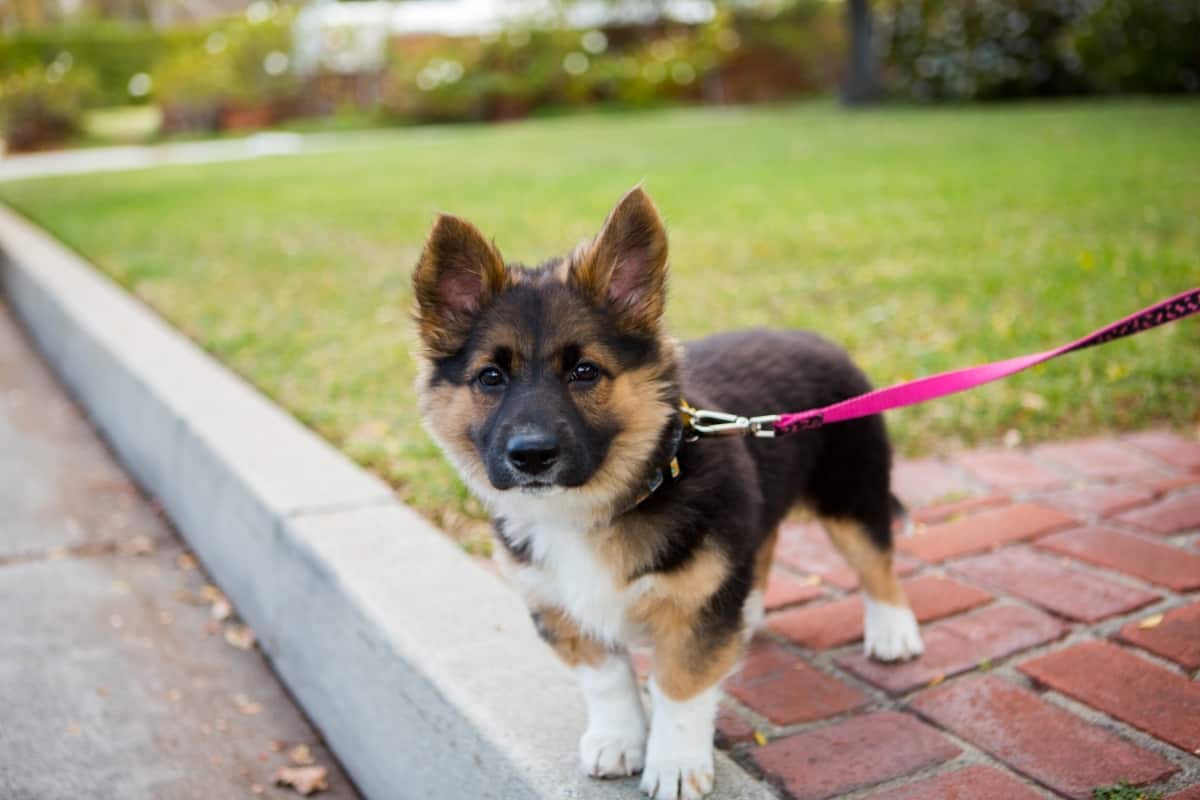
- Strong and lively small breed herding dog bred to move cattle and sheep.
- Loyal, playful, friendly, protective, intelligent, alert, affectionate, fearless, independent, watchdog.
- Fond of children and gets along with other family pets. Excellent first-choice dog.
- Small breed between 10-12.5 inches (27-32 cm) tall at the withers. Weigh up to 30 pounds. Lifespan is 12-14 years.
- Four coat colors (red, sable, fawn, tri-colored), and many have white markings on the legs, chest, neck, muzzle, and tummy.
- Enjoy exercise and require at least an hour a day. Quick and agile despite their short, muscular legs. Good at agility, tracking, herding events, and obedience.
- Double-coated. Heavy shedders but easy to groom.
Yorkshire Terrier
The GERMAN YORKIE SHEPHERD is relatively rare and is somewhat of a controversial teacup German Shepherd due to the two breeds being at opposite ends of the size spectrum and the risk of health issues of the puppies, which is difficult to determine.
Therefore, artificial insemination may be required when breeding breeds of different sizes.
Key Points:
- A small terrier-type dog bred to catch rats.
- Trendy companion dog. Maximum weight of 7 pounds (3kg) and a height of 8-9 inches (20-23 cms). Lifespan is 12-15 years. Comes in various colors.
- Intelligent, trainable, courageous, confident, bold, affectionate, independent, feisty, bossy, alert, and curious.
- Suspicious of strangers and will bark at intruders and unfamiliar sounds; good watchdogs.
- House dogs that don’t like the cold and can’t tolerate extreme heat.
- Make a good first dog and are ideal for apartment living.
- Not child-friendly. Can become snappy around noisy toddlers if teased or startled.
- Good with other family pets, in particular cats.
- Require a fair amount of physical and mental exercise. Enjoy playing and chasing.
- High-maintenance. Non-shedding dogs, but their coats are similar to human hair, requiring regular grooming.
Related: Can a German Shepherd Mate With a Yorkie?
Dachshund
The DACHSHUND SHEPHERD is also very rare, and like the German Yorkie Shepherd, controversy and differences in opinions surround this teacup German Shepherd.
Key Points:
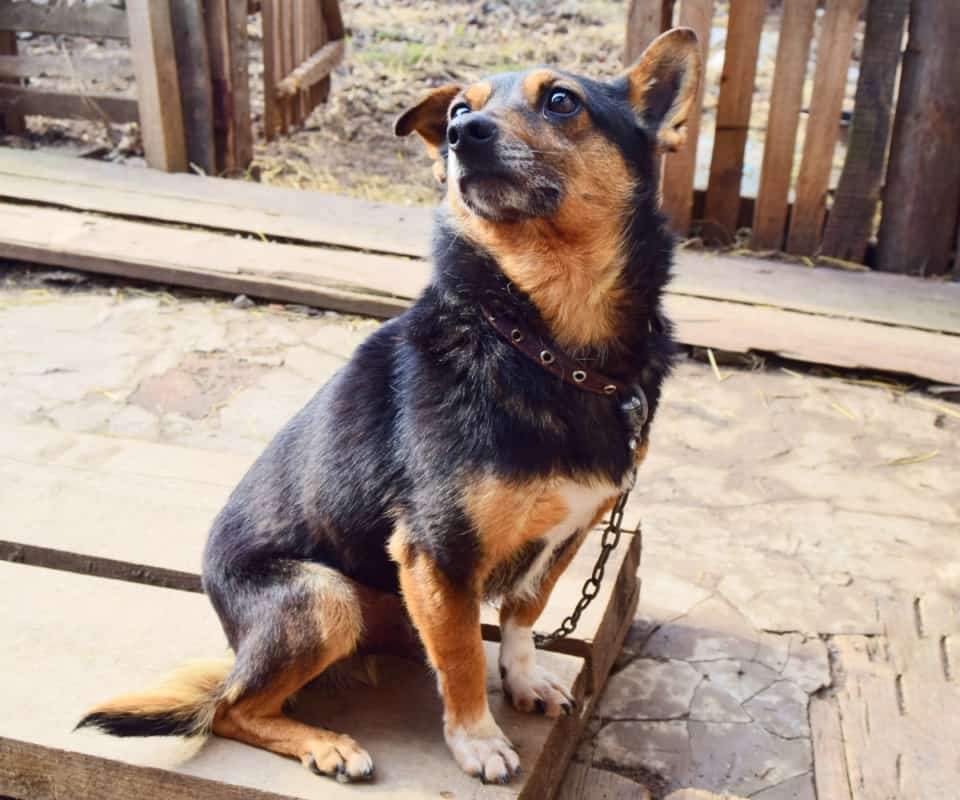
- It was bred as a hunter of burrow-dwelling animals – part of the hound group.
- Long muscular body. Short legs. Standard size weighs up to 32 pounds and is 8-9 inches tall (20-23 cms). Lifespan is 12-15 years. It comes in various colors.
- Intelligent, lively, playful, courageous, bold, independent, affectionate, devoted, fierce, and stubborn. Good watchdogs, feisty, wary of strangers.
- Stubborn, mischievous, and challenging to train.
- Good first pets. It is suited to apartments.
- Good around young children and other pets. But can be a little snappy around unfamiliar children, especially if teased.
- Tireless when it comes to exercise. Enjoy long walks.
- Come in shorthaired (smooth), longhaired, and wirehaired varieties. Smooth is more popular as their coats need little grooming.
- Not suited to living outdoors. The smooth-haired variety requires a coat in cold weather.
- Learn about the pros and cons of Dachshunds.
Related: How To Tell What Your German Shepherd is Mixed With
Finding a Miniature German Shepherd: Your Options
It can be quite challenging to find a good breeder specializing in the type of min German Shepherd you are looking for. Some dishonest breeders may even advertise the dog as a purebred or a “teacup German Shepherd.”
You can get a miniature German Shepherd from a reputable breeder or adopt a dog from an animal shelter or rescue center.
Adopting gives you a major advantage in that you can go and see the dog you choose. You can also search online at Adopt a Pet or The Shelter Project.
- Adopt-a-Pet.com is America’s largest non-profit pet adoption website, where shelters and rescue centers can list their pets for adoption.
- The Shelter Pet Project aims to make shelters the first place potential adopters look when choosing a dog.
In the UK, there are many organizations and charities to help you find a dog to adopt. Here are some popular options:
- The RSPCA’s Find a Pet will allow you to search online for dogs that need a home nearby.
- The Dogs Trust is the UK’s largest dog welfare charity and cares for thousands of dogs each year through a network of rehoming centers.
- Blue Cross is another charity that helps sick, injured, abandoned, and homeless pets.
If you decide to find a reputable breeder, do your due diligence. My article, How to Buy a German Shepherd in 5 Easy Steps, will give you loads of helpful advice and tips, but here are some quick tips when choosing a puppy:
- Go and meet the breeder. Ask any questions to see how knowledgeable they are, e.g., ask about any likely traits. See if they appear genuine and honest and are not running a puppy farm.
- Ask to see all the puppies in their environment. Check how happy and healthy they look.
- Get the breeder to show you the parents. A reputable breeder will do this as a matter of course, as they have nothing to hide.
- Ask to see the puppies with their parents. Watch their behavior and see how they interact.
- Get a full medical history. Remember to check not only the pup you are interested in but also the parents.
- Expect the breeder to quiz you regarding your suitability. Good breeders care for the dogs as they care for their pups and will not sell them to anyone.
Cost
Buying a purebred German Shepherd from a reputable breeder can be expensive.
Depending on various factors such as breeder experience, bloodline, location, the number of puppies, etc., they can cost anywhere between $800-$5,000.
The average cost of a miniature German Shepherd is $1500, whereas the average cost of a purebred German Shepherd is $2000.
Therefore, purebred GSDs are generally more expensive. However, you can adopt a mini German Shepherd from a rescue or shelter at a much lower price, between $100-$300.
The average price of around $2000 for a purebred German Shepherd comes from my original research in this article, How Much is a German Shepherd? 21 Examples!
My German Shepherd cost me around $1100 (£900) a few years ago. However, prices have increased considerably in the last few years.
Key Takeaways
Miniature German Shepherds can be delightful family pets, offering the charm of a German Shepherd in a smaller package. However, they are not purebred and result from cross-breeding a German Shepherd with a smaller breed.
While they aim to embody the German Shepherd’s qualities, their mixed heritage means they might also inherit traits from the other breed, which aren’t always desirable.
Additionally, breeding German Shepherds with much smaller breeds is a contentious issue, often criticized for potential health risks. If you are considering this breed, it’s crucial to weigh these factors carefully.





